- Home
- About Us
- Products
- Applications
- Support
- Blog
- Home
- About Us
- Products
- Applications
- Support
- Blog
Wafer Cleaning Process
The Objective of Wafer Cleaning
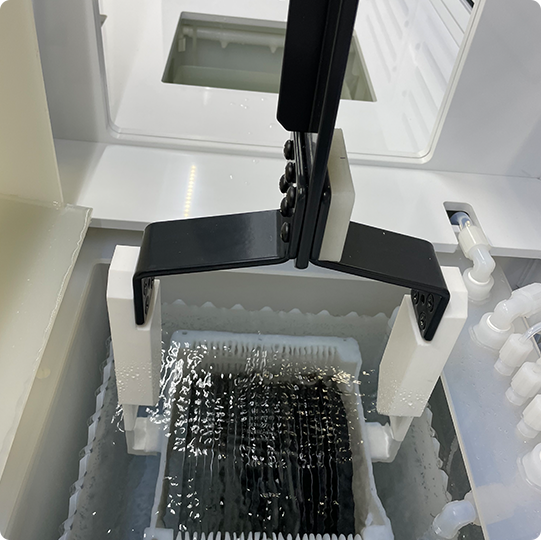
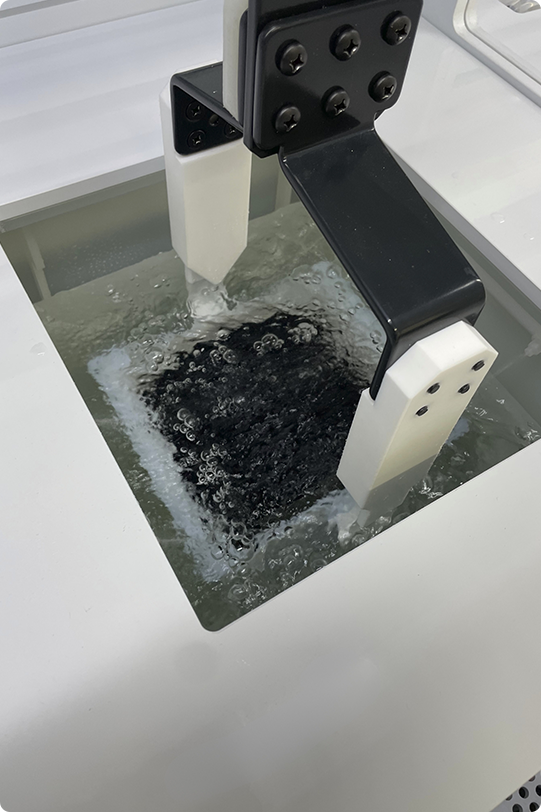
Wafer Cleaning Techniques
RCA Clean
The RCA clean process was originally developed by RCA Corporation and is a cleaning method to remove organic residue from silicon wafers. The cleaning solution comprises five parts: water, 1 part 30% hydrogen peroxide, and 1 part 27% ammonium hydroxide. It is an effective way to remove organic contaminants and leaves a thin layer of oxidized silicon on the surface of the wafer.
Standard Clean 1 and 2 (SC1 Clean, SC2 Clean)
The RCA cleaning process can be carried out in two steps called SC1 and SC2. SC1 clean process uses the APM solution (ammonia hydroxide-hydrogen peroxide water mixture) of the RCA cleaning method, which removes organic matter and particles. This treatment forms a thin silicon dioxide layer on the wafer surface with some metallic contamination that will be removed in subsequent steps. The SC2 cleaning method uses a solution typically comprised of 6 parts deionized water, 1 part hydrochloric acid, and 1 part hydrogen peroxide or HPM (hydrochloric/peroxide mixture). This step effectively removes the remaining traces of metallic (ionic) contaminants, some of which were introduced in the SC1 cleaning step. In addition, it leaves a thin passivation layer on the wafer surface that protects it from subsequent contamination. These two steps prepare the silicon wafer for further processing.
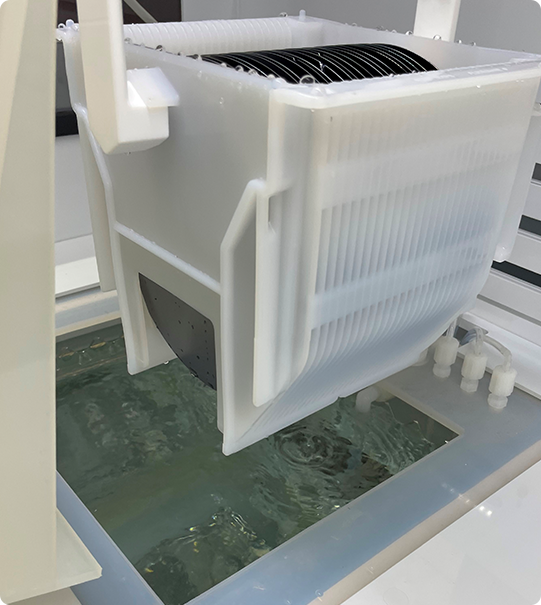
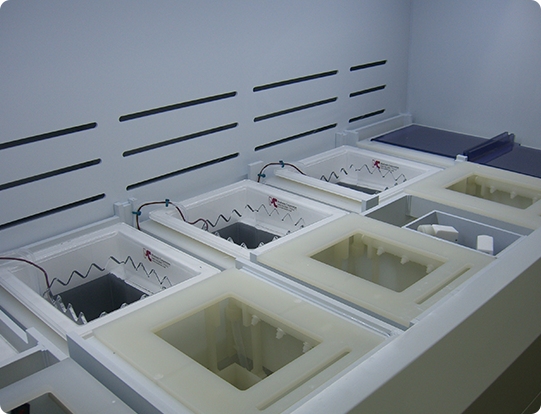
Piranha Etch Clean
Piranha etch is a popular process for cleaning silicon wafers, but it must be tightly controlled to be effective. Piranha etch clean, also known as Piranha solution, removes large amounts of organic residues from wafer substrates. It effectively removes photoresist and other hard-to-remove organic materials. The typical mixture ratio is three parts of sulfuric acid and 1 part of 30 percent hydrogen peroxide. Different protocols use higher sulfuric acid ratios of 4 to 1 or as high as 7 to 1. Since the mixture is a strong oxidizing agent, it removes most organic matter, hydroxylates most surfaces, and makes them hydrophilic (water-compatible). The mixture is highly corrosive and must be prepared and handled with special care. The piranha etch process can be done in heated Quartz Tanks where both temperature and chemical concentration affect the etch rate. Modutek provides a process control strategy that delivers improved results; for more details, refer to the article “Improving Piranha Etch process results in silicon wafer cleaning“.
Pre-Diffusion Clean
Pre-diffusion cleans are critical steps during the wafer manufacturing process. They are done several times during manufacturing and require significant equipment capacity. They are done as the final step before the silicon wafer goes through a diffusion furnace operation. Particle and metallic contamination must be minimized, and etch uniformity must be optimized while high throughput is maintained.
Depending on the nature of the contaminant, various aggressive chemicals, including those from the cleaning methods mentioned above, may be used to achieve clean surfaces. Pre-diffusion cleaning is a critical process because particles or contaminants on the wafer surface are likely to be driven into the wafer, causing unpredictable electrical properties that result in defective or low-quality semiconductor output.
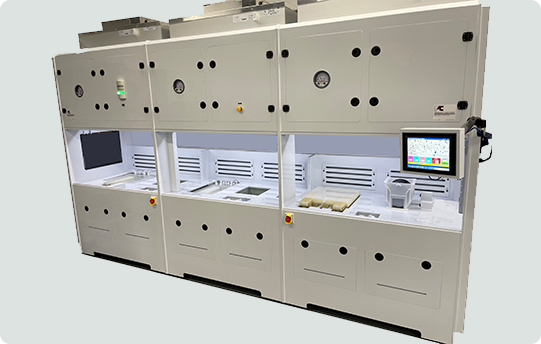
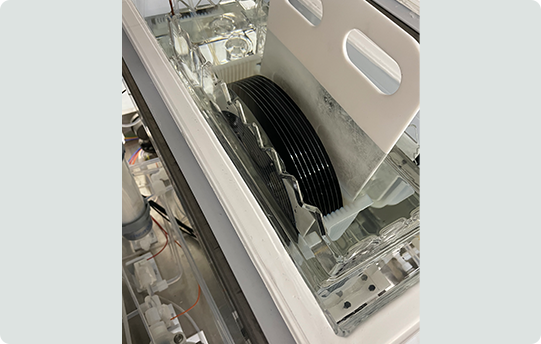
Megasonic Cleaning
Wafer manufacturing facilities and research centers require stringent contamination control protocols and use various methods for cleaning wafers. These methods include mechanical and wet chemical baths combined with high-frequency megasonic cleaning equipment.
Megasonic cleaning of silicon wafers involves using various complex mechanisms that include mechanical vibration and cavitation within a cleaning tank. It does not require the use of expensive chemicals and simultaneously removals of both contaminant films and submicron particles.
Ozone Cleaning
The Ozone cleaning process can clean or strip wafers faster and more cost-effectively than traditional cleaning processes. Modutek’s proprietary Advanced Ozone Cleaning Process does not require the use of expensive chemicals and improves process performance while reducing environmentally harmful waste. The process uses DI water in Modutek’s DryZone gradient dryer to clean wafer substrates to eliminate inorganic impurities before exposing them to an ozone chamber. All traces of organic materials are converted to carbon dioxide. The resulting substrate surfaces are free from particles, trace organic materials, and moisture with a stable hydrophilic surface.
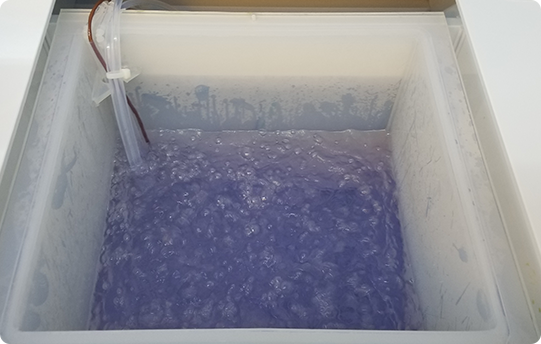
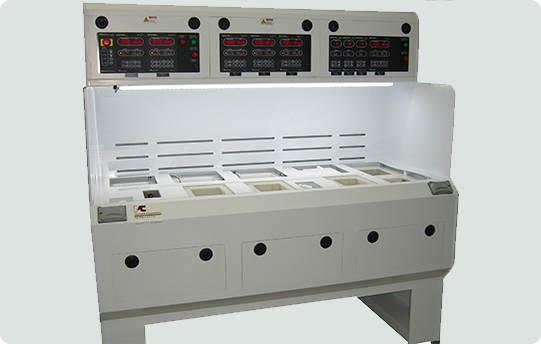
Consultation and Equipment Support from Modutek
With Modutek’s specialized equipment, customers ranging from large semiconductor manufacturers to small research facilities can significantly improve their production results, especially with the customization features that Modutek can provide. Superior wafer cleaning process performance impacts all aspects of semiconductor manufacturing, from initial prototyping to full production line fabrication. If you need equipment to improve your wafer cleaning process and manufacturing yields, contact Modutek to schedule a free consultation.
